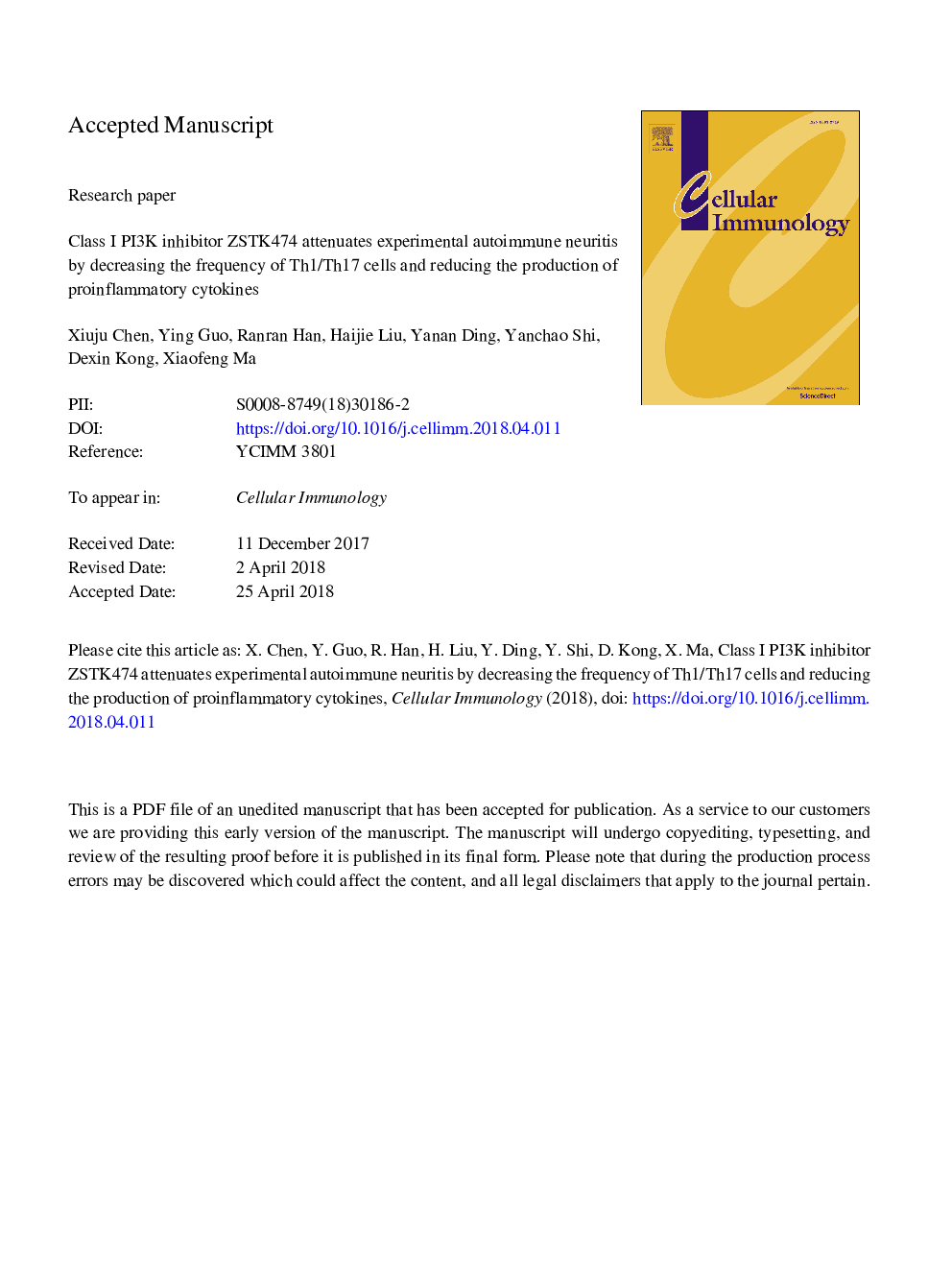| Article ID | Journal | Published Year | Pages | File Type |
|---|---|---|---|---|
| 8463538 | Cellular Immunology | 2018 | 32 Pages |
Abstract
The Class I phosphatidylinositol 3-kinase inhibitor, 2-(2-difluoromethy lbenzimidazol-1-yl)-4,6-dimorpholino-1,3,5-triazine (ZSTK474), has anti-inflammatory and immunoregulatory properties. However, whether it can be used to treat Guillain-Barré syndrome (GBS)-a neuroinflammatory disorder-is unknown. We induced experimental autoimmune neuritis (EAN) in Lewis rats, an established model of GBS. Orally administered ZSTK474 decreased neurological deficits in the GBS model, as demonstrated by diminished inflammatory cell infiltration, and ameliorated demyelination of sciatic nerves. Additionally, ZSTK474 decreased the number of Th1/Th17 cells and levels of the proinflammatory cytokines interleukin (IL)-1α, IL-1β, IL-17, IL-23, interferon-γ, and tumor necrosis factor-α. We propose that the phosphoinositide 3-kinase/AKT/mammalian target of rapamycin complex 1 (PI3K/AKT/mTORC1) pathway likely contributed to the neuroprotective effect of ZSTK474. ZSTK474 effectively decreases the frequency of Th1/Th17 cells, thereby reducing the production of proinflammatory cytokines and successfully alleviating the symptoms of EAN. Thus, the neuroprotective effect of ZSTK474 indicates its potential utility as anti-inflammatory therapy for GBS.
Keywords
GAPDHLFBMTSGBSDAPILuxol Fast BlueEANCMAPqRT-PCRGM-CSFMNCmTORTregsgranulocyte-macrophage colony stimulating factorregulated upon activation normal T cell expressed and secretedHPCMNCVPBSZSTK474TNFPI3KDPI3-(4,5-dimethylthiazol-2-yl)-5-(3-carboxymethoxyphenyl)-2-(4-sulfophenyl)-2H-tetrazoliumAUCH&Eexperimental autoimmune neuritisinflammationelectromyographyEMGinterferonIFNinterleukinELISAEnzyme-linked immunosorbent assaydays post-inoculationmotor nerve conduction velocityhelper T cellsmononuclear cellT cellsRegulatory T cellsGuillain-Barré syndrometumor necrosis factorPhosphatidylinositol 3-kinasePhosphate-buffered salineRANTESarea under the curvemammalian target of rapamycinhematoxylin-eosinHydroxypropyl cellulosecompound muscle action potentialglyceraldehyde-3-phosphate dehydrogenase
Related Topics
Life Sciences
Biochemistry, Genetics and Molecular Biology
Cell Biology
Authors
Xiuju Chen, Ying Guo, Ranran Han, Haijie Liu, Yanan Ding, Yanchao Shi, Dexin Kong, Xiaofeng Ma,
